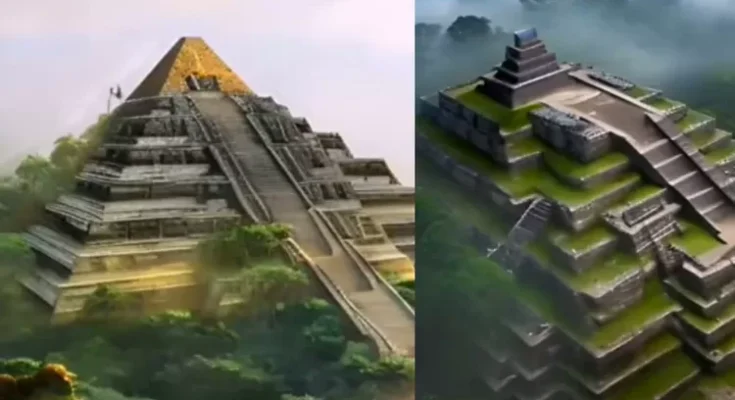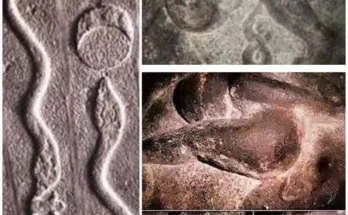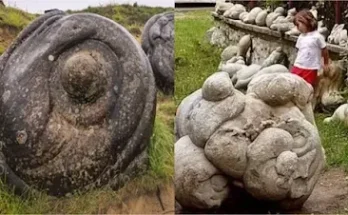What you see in this photo is a reconstruction of the oldest pyramid in the world, and it is located Gunung Padang, Indonesia. Today the mound is full of trees, vegetation and soil, so it is not completely visible to the naked eye. But if it were completely cleared, it would appear as in the photo. The latest research, as you can see in the photo below, suggests that there are three empty chambers under the pyramid.
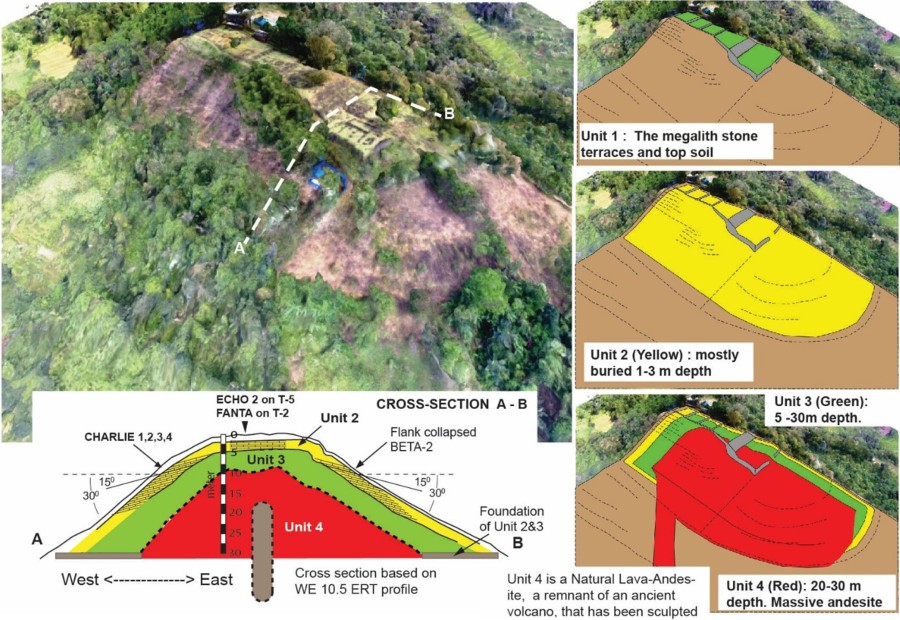
No one has yet managed to penetrate inside.…According to the article published on nationalgeographic.grid.id on 19 December 2018 ‘Gunung Padang is not simply the hill it appears to be, but it is a series of ancient structures with foundations …. Using a combination of different survey methods, including georadar (GPR), seismic tomography and archaeological excavations, the research team [of Prof. Danny Hilman Natawidjaj] affirmed that Gunang Padang is not a completely artificial structure, but was built in later prehistoric periods. The upper part consists of stone columns, walls, roads and open spaces. In contrast, the second layer lies about 1-3 metres below the surface.
According to researchers, this second layer was previously mistaken for natural rock formations. In reality, these are columnar basalt blocks arranged in a matrix structure. Below it, there is a third layer that consists of grouped rocks and a large basement that extends to a depth of 15 metres. The fourth layer consists of basaltic rock that was somehow modified or sculpted by human hands’.…According to Danny Hilman Natawidjaj, geologist at the Indonesian Centre for Geological Research, the various areas of the site were subjected to C14 radiocarbon examination, and yielded surprising results.
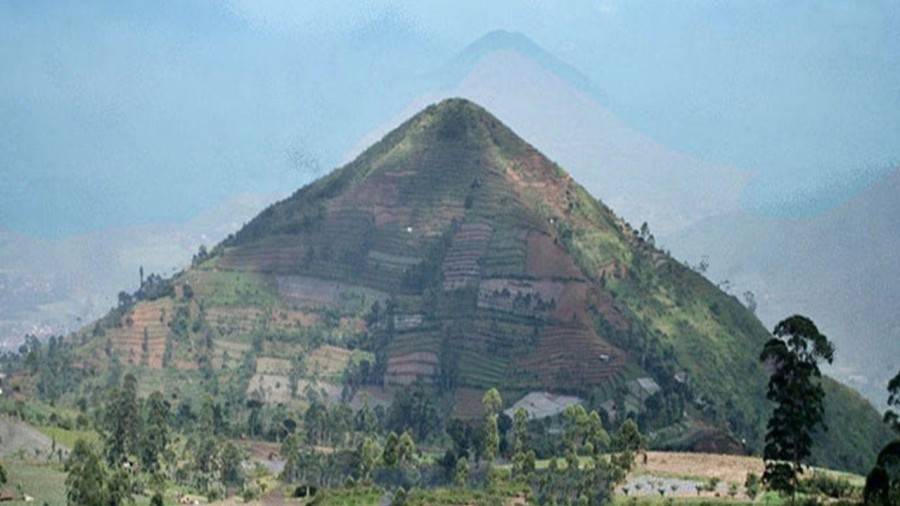
The C14 carbon examination would reveal that the ruins of the surface area have been dated between 3,000 and 3,500 years ago. This puts us around 1,000 BC, before Rome became an empire. But things do not end there. According to the researchers, beneath the surface, at a depth of about 3 metres, there should be a second layer consisting of columnar basalt blocks. The Indonesian researchers, using the C14 radiocarbon dating system, tell us that this second layer was built between 7,500 and 8,300 years ago.
That would put us in about 6,000 B.C., when the first Sumerians appeared….Also according to the researchers, there would be a third layer, extending up to 15 m below the surface. According to investigations with C14 radiocarbon, this layer dates from around 9,000 years ago. We are therefore in 7,000 BC. According to traditional archaeology at that time there was no writing, no cities, and man was in the Stone Age. But this is not the end of the story.
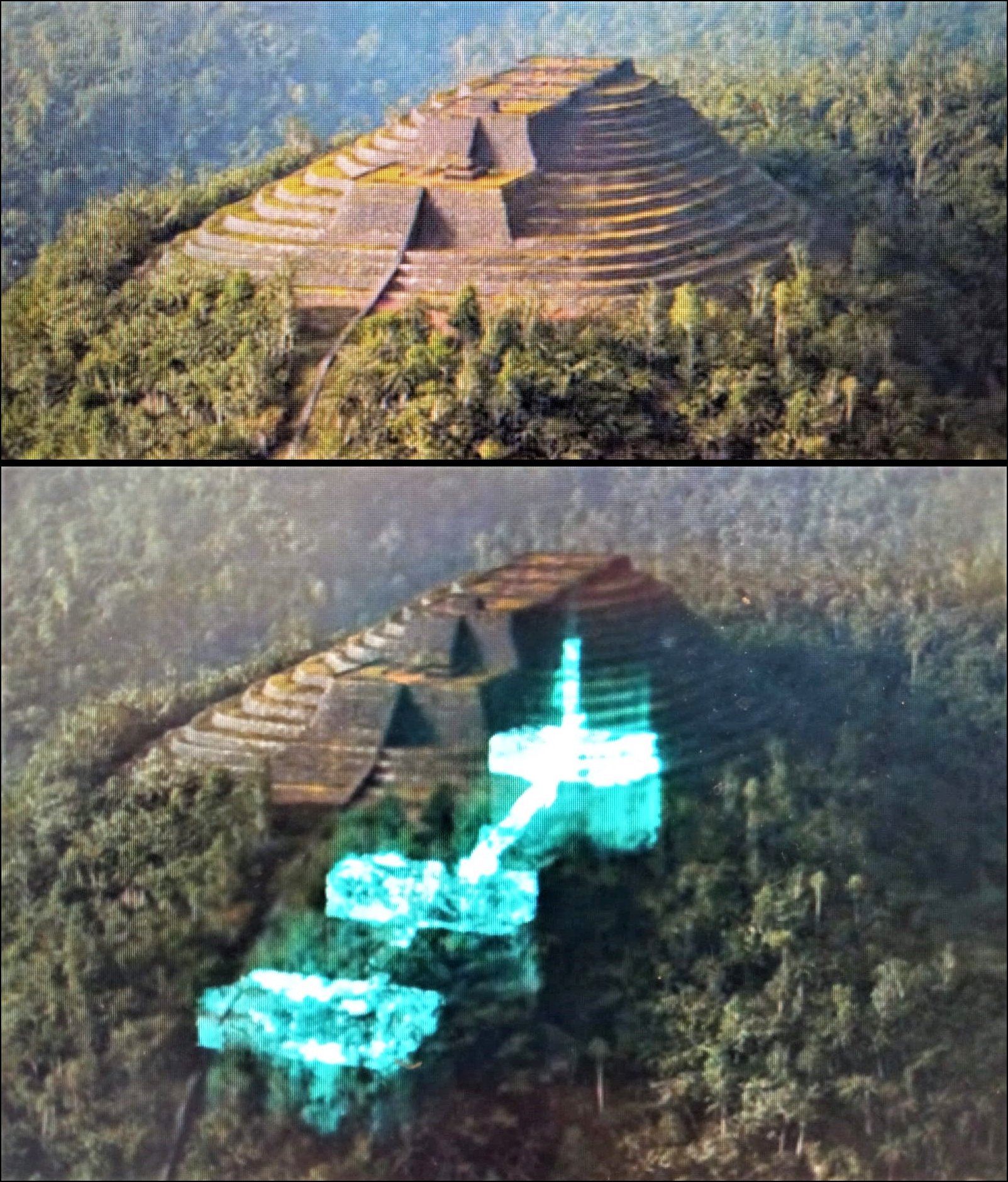
According to the researchers, below this layer, there would be a fourth layer, the remains of which, according to C14 radiocarbon surveys, could be dated as far back as 28,000 years ago. …It is now an established scientific fact that before the Last Thaw, i.e. before the sea level rose 120 metres, in place of present-day Indonesia lay the subcontinent that researchers call ‘Sundaland’. Today, this subcontinent lies under water. The Thaw began about 14,000 years ago, and as we said, the Gunung Padang pyramid could be up to 28,000 years old.
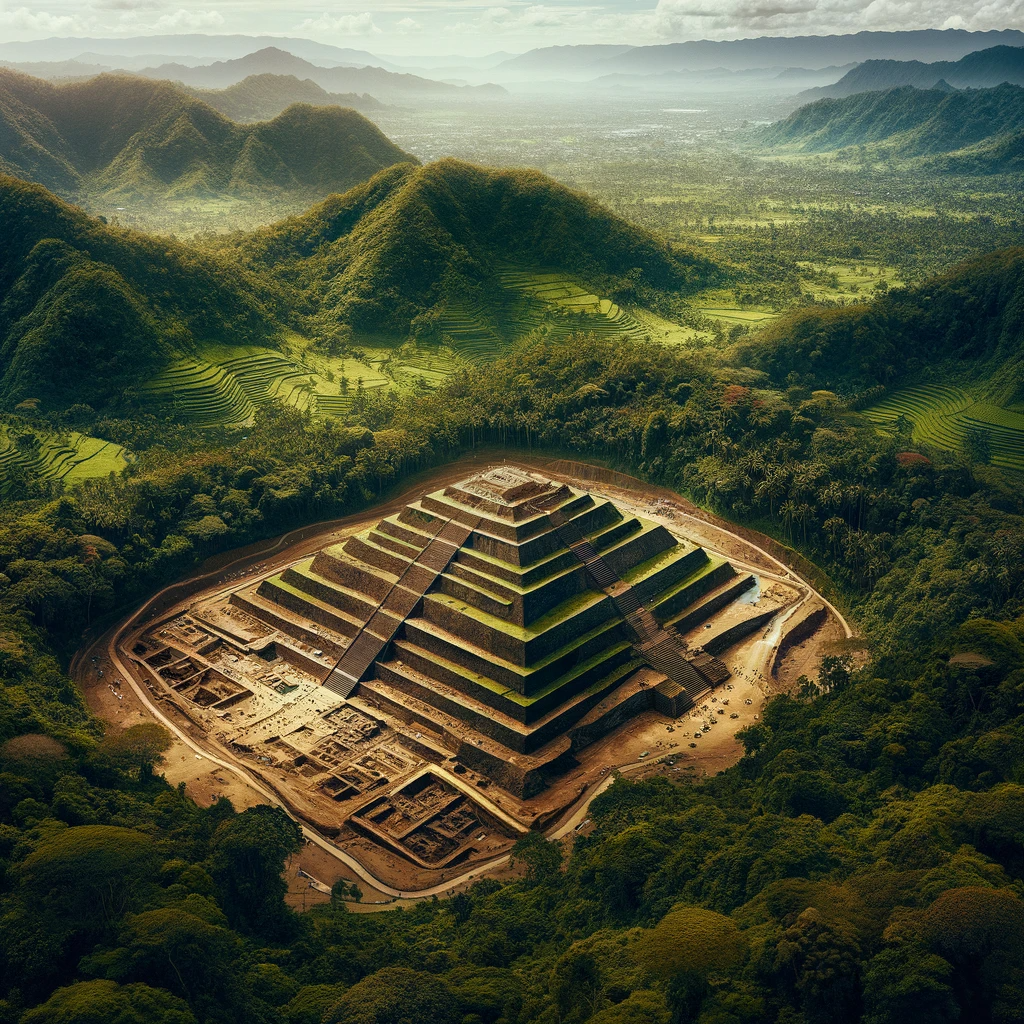
This means that when the civilisation of Sundaland began to be submerged by the waters of the Thaw, it had already existed for at least 14,000 years. Under the waters of Indonesia there are therefore dozens or hundreds of Gunung Padang just waiting to be discovered…
